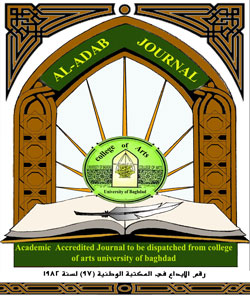Execution in the concept of psychological anthropology
DOI:
https://doi.org/10.31973/w5rq4r06Keywords:
execution, convict, prison, thresholdAbstract
The community of death row forms a parallel universe to the prison society within the Iraqi correctional institution, which in turn constitutes a world and a society parallel to the society in which you live. This narrow world with its space and freedom contains many conflicts, hopes and fear, the anxiety of waiting for the next, it is an important station of the next stations for the prisoners who live in it, waiting for death is one of the most difficult moments that an individual can live, and there is no doubt that this waiting is clearly reflected in the daily life of the waiting inmates, especially in terms of their food, behavior, dreams, expectations, health condition, long-term relationships and ambitions that they want to reach, and there is no doubt that prison is a special culture However, it is not completely separated from the mother culture from which the inmate branchs, which came from her world uttered his criminal act, as the study concluded according to the theory of the world Goffman as well as Freud that the process of interaction that occurs inside the prison and the process of stigma and the processes of institutional dealings and the death of the subjects, as well as the duality in dealing and the anomaly that exists despite reaching the stage of death, all give a foundational model for the work of both the daily life of those sentenced to death and the prison institution charged with the work of that private world. It is decreed for him and he acts according to what has been prepared for him from institutional roles that he does not know that it was prepared, not the death of himself, and the industry of another institutional self is more submissive.
Downloads
References
Bojosi, K. N. (2004). The death row phenomenon and the prohibition against torture and cruel, inhuman or degrading treatment. 4 African Human Rights Law Journal 303.
Geoffrey Abbott. (n.d.). burning at the stake capital punishment. Retrieved from www.britannica.com.
Justifying Punishment. (n.d.). Retrieved from https://www.sagepub.com.
Martin, O., & Yar, M. (2008). CRIMINOLOGY The Key Concepts. (b. Routledge, Ed.)
Matthew A. McIntosh. (n.d.). The ‘Breaking Wheel’ in Torture and Execution in Ancient and Medieval Europe. Retrieved from https://brewminate.com/the-breaking-wheel-in-torture-and-execution-in-ancient-and-medieval-europe.
N. M. Ghatate. (n.d.). LAW COMMISSION OF INDIA, CONSULTATION PAPER ON MODE OF EXECUTION OF DEATH SENTENCE AND INCIDENTAL MATTERS. Retrieved from [email protected].
Nina Kren. (2014). The Death Row Phenomenon: Examining the Concept from a Human Rights Point of View. (Seminar paper, University of Vienna).
Schneider, J., & Schneider, P. (2008, June 24). The Anthropology of Crime and Criminalization. www.annualreviews.org.
Toch, H., Acker, J., & Bonventre, V. (Eds.). (2018). Living on Death Row: The Psychology of Waiting to Die. http://dx.doi.org/. American Psychological Association.
Ville, J. D. (2019, December 10). On Crime and Punishment: Derrida Reading Kant. Law and Critique (2020) https://doi.org.
www.bbc.com/news/world-asia-31812177>. (2016, April 3).
جان جاك روسو. (2011). في العقد الاجتماعي (المجلد الأولى). (عبد العزيز لبيب، المترجمون) المنظمة العربية للترجمة.
جيامبرتو، و جوبو. (2014). أجراء البحث الاثنوجرافي (المجلد الأولى). (محمد رشدي، المترجمون) القاهرة: المركز القومي للترجمة.
سكينر. (1998). تكنولوجيا السلوك الإنساني. (د. عبد القادر يوسـف، المترجمون) سلسلة عالم المعرفة.
عصام السيد محمد أبو العزم. (2015). فلسفة العقوبة دراسة في فلسفة القانون. مجلة العلوم القانونية والفلسفية.
ميشيل حنا. (بلا تاريخ). 30 طريقة للموت تاريخ وسائل الإعدام في العالم. www.ibtesamh.com/vb، الثانية.
وليام اوثوايت. (2022). قاموس بلاكويل للفكر الاجتماعي الحديث (المجلد الأولى). (فالح عبد الجبار، المترجمون) هيئة البحرين للثقافة والنشر.
Downloads
Published
Issue
Section
License
Copyright (c) 2024 سمير محمد حميد باكي، أ.م.د. ماجد علي مصطفى

This work is licensed under a Creative Commons Attribution 4.0 International License.
Copyright and Licensing:
For all articles published in Al-Adab journal, copyright is retained by the authors. Articles are licensed under an open access Creative Commons CC BY 4.0 license, meaning that anyone may download and read the paper for free. In addition, the article may be reused and quoted provided that the original published version is cited. These conditions allow for maximum use and exposure of the work.
Reproducing Published Material from other Publishers: It is absolutely essential that authors obtain permission to reproduce any published material (figures, schemes, tables or any extract of a text) which does not fall into the public domain, or for which they do not hold the copyright. Permission should be requested by the authors from the copyrightholder (usually the Publisher, please refer to the imprint of the individual publications to identify the copyrightholder).
Permission is required for: Your own works published by other Publishers and for which you did not retain copyright.
Substantial extracts from anyones' works or a series of works.
Use of Tables, Graphs, Charts, Schemes and Artworks if they are unaltered or slightly modified.
Photographs for which you do not hold copyright.
Permission is not required for: Reconstruction of your own table with data already published elsewhere. Please notice that in this case you must cite the source of the data in the form of either "Data from..." or "Adapted from...".
Reasonably short quotes are considered fair use and therefore do not require permission.
Graphs, Charts, Schemes and Artworks that are completely redrawn by the authors and significantly changed beyond recognition do not require permission.
Obtaining Permission
In order to avoid unnecessary delays in the publication process, you should start obtaining permissions as early as possible. If in any doubt about the copyright, apply for permission. Al-Adab Journal cannot publish material from other publications without permission.
The copyright holder may give you instructions on the form of acknowledgement to be followed; otherwise follow the style: "Reproduced with permission from [author], [book/journal title]; published by [publisher], [year].' at the end of the caption of the Table, Figure or Scheme.












